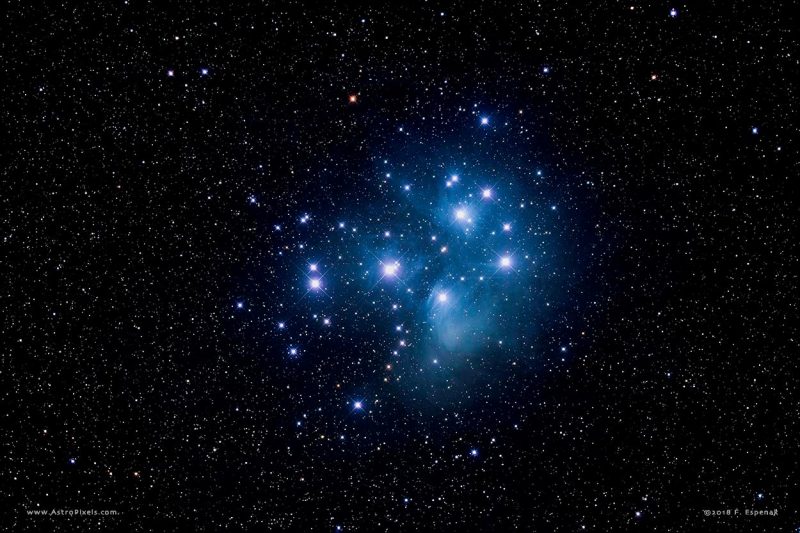Judy wrote: ↑Wed May 19, 2021 6:43 pm
Are the orange and blue stars scattered across the background in more-or-less true color? So many of the photos on this site have colors added so we can see colors that human don't. I would love it if these were really blue and red.
Thanks! Love the picture.
Yes, I'd say that the colors are relatively true. The orange stars and Mars are a bit saturated. That is to say that if you were to look at them in the night sky, and even better, through a telescope, they would not look all that orange. But they would certainly look golden-yellow. You know what color Betelgeuse is, don't you? Next time you see Betelgeuse in the sky, try to memorize its color. Because Eta and Mu Gem are actually a little paler in color than Betelgeuse.
How do I know? It has to do with the star's B-V index, which measures the stars output in blue light versus its output in yellow-green light. The higher the B-V index, the redder is the star. The B-V index of Betelgeuse is around +2, but for Eta and Mu Gem, it is around +1.6. My impression is that a star's B-V index really really is a good indicator of its visual color.
It is much harder to see blue color than orange color in stars, because all blue stars are pale and close to white. That is because all blue also emit a lot of red and yellow light too, and they just emit even more blue light. Therefore their colors can never be intensely blue. Orange stars like Betelgeuse and Eta and Mu Gem, by contrast, emit almost no blue light at all, so their colors are very much more saturated, and their hues are easily visible.
What about the blue-looking stars in this picture?
The apparently bluest object is a star that "sits in a reflection nebula", which means that much of its blue light has been scattered around it by dust. The scattered light is very blue and shows up well in photographs, but we can't see it. It is too faint.
You know the Pleiades, don't you? The stars of the Pleiades normally look white when you look at them with the naked eye, but most people can see that they look bluish when they look at them through a telescope. But even through a telescope, you can't see the blue reflection nebulas, only the stars. It takes long-exposure photographs to bring out the nebulas.
But are the blue or bluish-looking stars in this picture really blue "IRL"? Yes, more or less. Some of the blue-looking stars in the picture are very very far away, and that goes for the star that sits in a blue reflection nebula. That star is some 5,700 light-years away! And there are a few other blue stars in the picture that are similarly far away. Then there are a few other bluish-looking stars that are much closer, some 500 light-years away.
The very distant blue stars look less blue than they really are, because there are so many minuscule cosmic dust particles between them and us that some of their blue light gets scattered away before it reaches us. That effect is called dust-reddening. Some of those distant stars are not only very bright but also intrinsically very blue, but we can't see it.
By contrast, there are some much more nearby stars that are intrinsically fainter and less blue, and they are far less affected by dust reddening. The bluest-looking star in the picture, at upper center-left, is a star of spectral class A2, with a B-V index of +0.02. The distance to this star is some 570 light-years. Actually a similarly blue-looking double star can be seen at far right, above right of Mars. The brightest component is a star of spectral class B9, whose B-V index may be -0.02. The distance to this star is some 1800 light-years.
So in general, you can trust the star colors in this image, even though you can't expect the stars to look the way they do here if you were to look at them with the naked eye (or even through a telescope). So what about planet Mars?
Mars is really strikingly reddish. That's why the ancients called planet Mars the god of war, because they thought that the planet was red with blood.
Ann
 The Jellyfish and Mars
The Jellyfish and Mars

